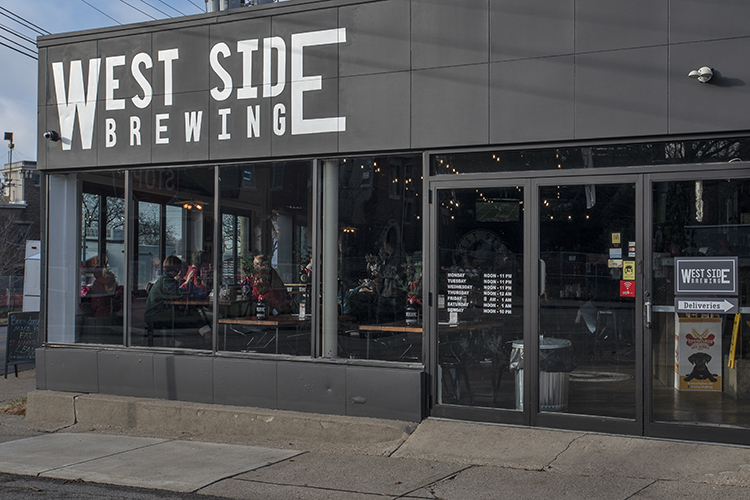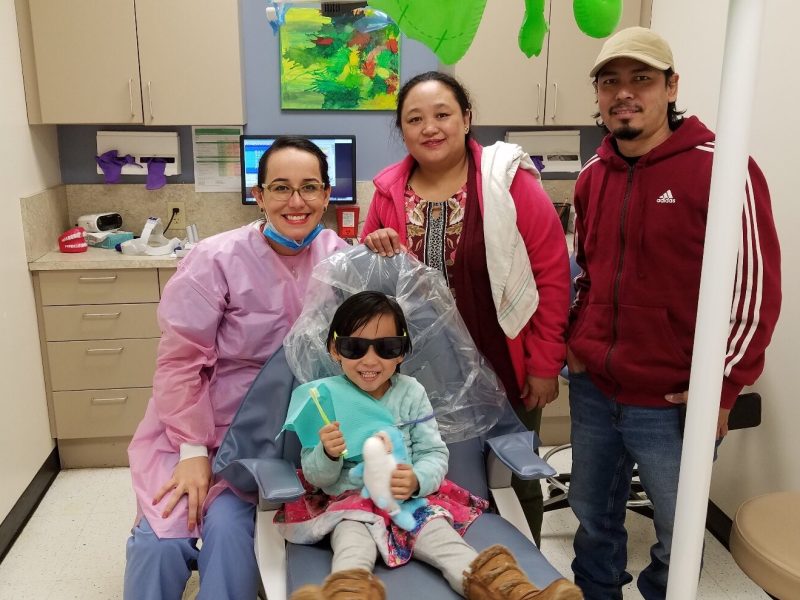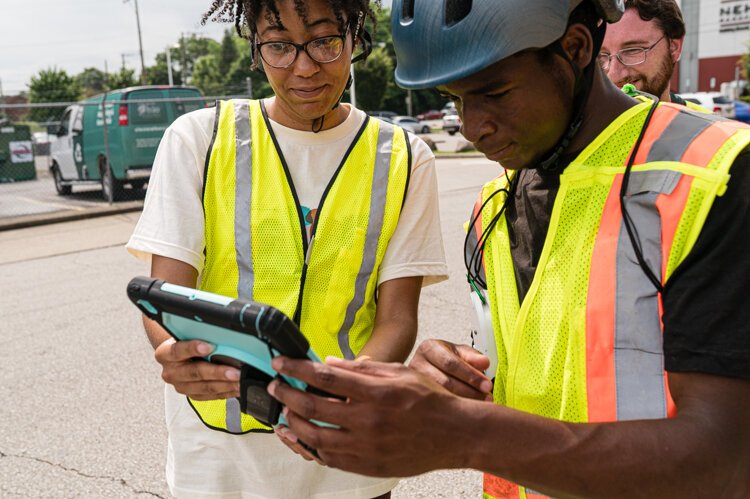Community partnerships usher in new development on the West Side
After some stalled attempts, Westwood's momentum is high and the neighborhood is making a comeback.
With an astounding 35,000 residents, the neighborhood of Westwood holds a full 10 percent of the Cincinnati metro population. Its 5.7 square miles are some of the most diverse in the city, with demographics, landscapes, and housing stock that varies sometimes within city blocks.
Westwood is one of Cincinnati’s oldest neighborhoods with some of the city’s most beloved neighborhood institutions. Yet, alongside this historic charm, the neighborhood has carried a reputation for being more than a few years behind some of the city’s more forward-thinking areas.
The past few years has brought multiple smaller developments to the Westwood community. Now, two big projects — the Westwood Town Hall Park and Landmark Productions’ Madcap Education Center — are bringing a lot of outside attention and an exciting new energy to the community. This large-scale investment is a long time coming and the fruit of years of work building strong community activism and public-private partnerships.
In search of a new reputation

Lifelong Westwood resident John Eby loves his neighborhood. He knows his neighbors and can tell all the stories behind the local businesses and historic homes. He sees Westwood as a place of great value and potential but, he says, twenty years ago it felt more like an immoveable rock.
“Westwood had an infamous reputation for saying, ‘No,’” he remembers. “We were our own worst enemy.”
With a small group of residents controlling most of the neighborhood-wide decisions, it was hard for the average citizen to assert any influence over the future of the community. This reputation had consequences.
For one, Eby says it killed community pride and motivation for residents. Also, both private and public money for large-scale projects were hard to secure without adequate community support and cooperation. The neighborhood could have been riding the tide of urban development like so many other Cincinnati neighborhoods but was, instead, sitting still. Economic development was stagnant and leaders were hesitant to make any changes.
Eby tells the story of when this tension between residents and community leaders came to a head. It was about ten years ago when an enthusiastic resident wanted to bring an Artworks mural to the neighborhood. Artworks is a reputable organization — she was an employee — and the design was appropriate for the site.
It should have been an easy sell to the community council. Instead, they gave an emphatic “No, we don’t do public art,” and they were persistent even after she tried multiple avenues for convincing them of the project’s value.
That was when Eby and a few other supportive residents started to question whether the council was the only method for community engagement and organizing. Perhaps there was a roundabout way to bring this project to life, they thought.
What transpired over the next few years is a crash course in grassroots community organizing and development. The way this small group of residents initially came together was fairly unrefined — over a pack of White Castle sliders and a case of beer, Eby says — but they were serious about seeing things move forward in Westwood, with or without the community council.
The mural was eventually completed and the loosely-affiliated group incorporated as Westwood Works, an “asset-based” community development corporation.
Westwood Works is different from other development corporations, Eby says, in the way it capitalizes on assets that already exist in the neighborhood. Rather than top-down decision-making, Westwood Works organizes interested parties in coming up with their own creative solutions. The organization functions from the belief that the resources necessary to accomplish great things for Westwood are already there.
“We started questioning the means of control in our own neighborhood and started to dream about what might actually be possible for the future,” says Eby. “In a place as big as Westwood, you can find everything you need in the neighborhood if you’re willing to go out and look for it.”
Development spurs development
In addition to helping jumpstart various projects around town, Westwood Works helped create the Westwood Coalition, a holding group with representatives from various organizations and stakeholders around the community.
One top priority was get the City of Cincinnati to invest public money in their business district, which requires a certain level of community cooperation. Westwood Coalition serves as a community forum and an advocacy group to give support for such initiatives. It helps provide stability and harmony throughout the neighborhood during development. And it takes the politics out of the decision making.
It was the Westwood Coalition that organized a series of community meetings about the future of the business district and is helping give life to some of the most frequently-expressed desires — a coffee shop, a brewery, more restaurants, and community greenspace.
“Because we were thinking and talking differently about Westwood,” Eby says, “business owners and real estate investors started investing.”
Once the ball gets rolling in community development, things start to fall into place. All of these smaller, one-off developments created the momentum and attention necessary to draw in larger investments like the Westwood Town Hall Park.
A new home for Madcap puppets (and more)

About 10 years ago, Madcap Puppets was making big decisions about the future of their arts organization. Their founder had recently passed away and their leadership was shifting. They had spent 20 years in Westwood but they had outgrown their facility and weren’t certain they could stick it out much longer.
In an interesting turn of events, a local Catholic nun heard that a massive building just off the business district was going to be sold off and thought it was news worth sharing with stakeholders in the community. This building, it turned out, was the perfect new home for Madcap Puppets and came at the perfect time.
The Public Library of Cincinnati and Hamilton County owned the building and had been using it for storage. It was an old, turn-of-the-century, Cincinnati Bell telephone exchange, with large open spaces and plenty of room for a growing arts organization.
The Westwood Community Urban Redevelopment Corporation bought the building for $250,000 and then sold it off to Madcap for pennies on the dollar, leaving it up to them to find the means to then renovate the space to meet their needs.
During this time, another West Side arts institution — Cincinnati Landmark Productions — was experiencing rapid growth and change. The organization began as a humble teen theater program in 1982 and was more commonly known for managing the Showboat Majestic.
Since then, the organization has ventured into developing year-round performing arts venues. In 2002, they opened the Covedale Center for Performing Arts in the Covedale district of West Price Hill. In 2015, they christened the Incline Theater in East Price Hill.
In fall of 2015, Landmark Productions began talking with Madcap Puppets about how they might merge their organizations and work together to develop and occupy that old Cincinnati Bell building. Landmark was confident in their ability to provide the project leadership and fundraising that Madcap needed; Madcap could provide the educational programming that Landmark Productions did not currently have.
Landmark Productions ended up absorbing Madcap into their organization and began preparation for the massive overhaul of their new Madcap Education Center.
The Education Center project got the attention of Mayor John Cranley, who had been instrumental in helping launch Landmark’s most recent project in the Incline District. He helped Westwood secure a massive amount of the Cincinnati Development Fund’s allocation of New Markets tax credits to use for the combined projects of the Madcap Education Center and the Town Hall Park project. It is a combined investment of $7 million.
“All of these things had to fall into line,” Eby says. “It had to be a perfect storm. And that’s how it happened.”
A new beginning for an old neighborhood
Leslie Rich has been the chair of Westwood Works’ board for seven years. In 2019, she will become their executive director.
Rich grew up in the neighborhood, right next door to the barber shop that her father operated for 60 years. She was there at the Artworks mural dedication and at the very first Westwood Works meetings. She has listened in while residents shared their hopes and dreams for the neighborhood and she is excited to be a part of an organization that is taking those dreams seriously and helping bring them to life.
“We are here to create demand and a desire to be in Westwood,” she says.
“Some folks might bring developers or businesses in first; we focus on relationships with our neighbors first and have seen that development and positive change will follow,” she continues.
She sees the proof all around her, in the new businesses and pop-up beer gardens, the neighbors meeting neighbors at the street festival. For her own part, Rich is also about to make an investment. She’s opening an all-ages arcade in the business district in 2019.
By design, this is usually how it happens: investment spurs investment. It’s the way a community comes alive.
Rodger Pille — who has worked for Cincinnati Landmark Productions for seven years and has overseen the Madcap Education Center project from its inception — understands its significance to the Westwood community and says Landmark Productions has no intention of keeping it to themselves.
The building is a 1920’s timepiece with Rookwood tile, cork floors, historic lighting fixtures, but all updated and adapted to modern use. It has a new, state-of-the-art 135-seat theater, an art studio, a dance studio, a puppet workshop, and more.
The vision for the building is much larger than housing their own theater company. There are plans in place for art and dance classes, theater classes, community events, and after-school programs. The goal is to let the arts filter out into the surrounding community for a broader impact — both socially and economically.
“It is truly neighborhood revitalization by way of the arts,” Pille says. “That excites us as an organization.”
“We can talk all day about how great the performance was in the show, but if people don’t come and spend money down the street in that little shop, or go get a drink in the bar across the street, or have dinner at the Mexican restaurant down the street, then the art doesn’t even matter,” he says.
Between the long-awaited Westwood Town Hall Park project, the Madcap Education Center, and all the small grassroots community efforts and investments, there are new stories being told on every corner of this old neighborhood.
“The things that are happening in Westwood are fantastic,” Pille says. “I know we’re going to be a part of the next wave.”


















